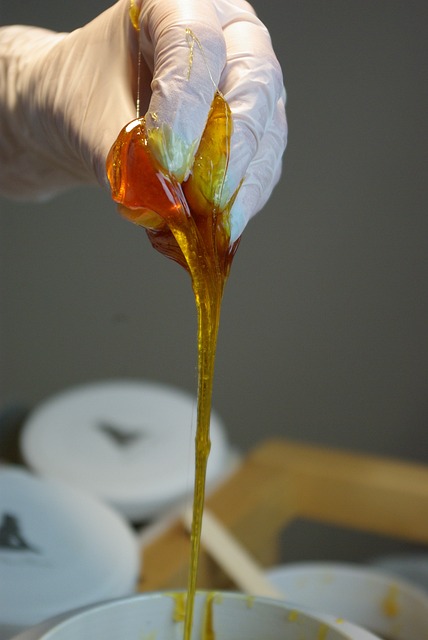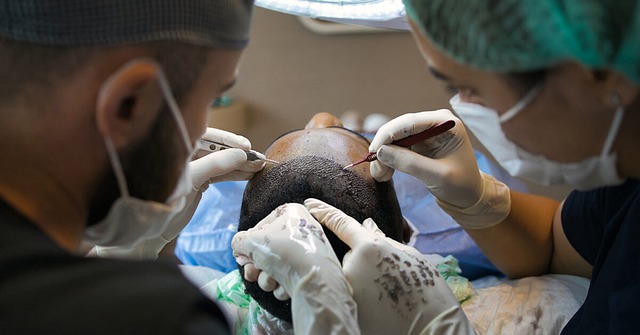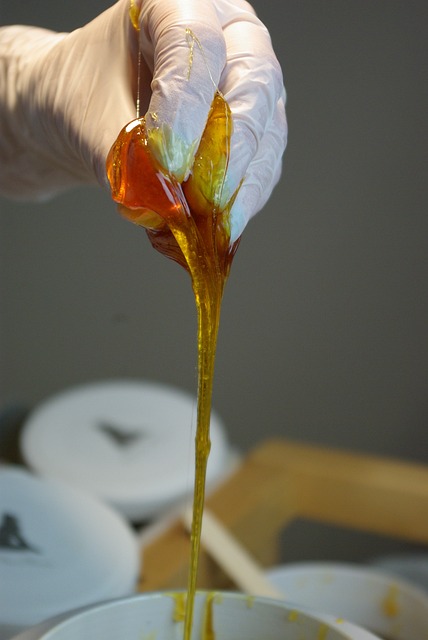Laser hair removal for the face offers a popular, effective, and permanent solution to unwanted facial hair. Unlike temporary methods like shaving or waxing, lasers target individual follicles with light energy to interrupt growth cycles, reducing regrowth over time. Advanced technologies ensure minimal discomfort and side effects, making it safer for sensitive areas. Benefits include saving time, achieving smoother skin, and minimizing the risk of ingrown hairs. Choosing the right laser technology based on skin and hair types is crucial. Professional consultations, proper aftercare, and consistent skincare maintain lasting results. Compared to traditional methods, lasers provide higher precision, fewer side effects, and long-term benefits for safer permanent hair removal.
Considering laser hair removal for your face? This comprehensive guide explores permanent hair removal, addressing all your concerns. From understanding the process to choosing the right technology and managing aftercare, we break down everything you need to know. Discover the benefits of laser hair removal for sensitive facial skin and learn who makes a good candidate. Plus, get top tips for maintaining results and comparing lasers to traditional methods.
Understanding Laser Hair Removal for Face: A Comprehensive Overview

Laser hair removal for the face is a popular and effective method for achieving smooth, hair-free skin. Unlike traditional depilation methods like shaving or waxing, which only temporarily remove hair, laser treatments aim for permanent hair reduction. This procedure uses targeted lasers to interrupt the growth cycle of individual hair follicles, reducing hair regrowth significantly over time.
During a typical session, a specialized laser device emits light that is absorbed by melanin in the hair follicle, causing it to heat up and damage or destroy the follicle. Multiple treatments are usually required to target all active follicles effectively. With proper care and maintenance, many individuals experience long-lasting reduction in facial hair growth, leading to a smoother and more confident complexion.
How Does Laser Hair Removal Work on Sensitive Facial Skin?

Laser hair removal for sensitive facial skin has gained popularity due to its effectiveness and minimal invasiveness compared to traditional methods. The process leverages light energy, specifically lasers, which are absorbed by melanin in the hair follicles. This targeted absorption heats up the follicle, damaging it and preventing future hair growth, ultimately achieving permanent hair removal.
For the face, where skin is generally more sensitive, advanced laser technologies have been developed to minimize discomfort and side effects. These include longer wavelengths that penetrate deeper into the skin without affecting the upper layers, as well as cooling mechanisms to soothe the skin during treatment. The result is a safer and more comfortable experience for patients seeking permanent hair removal on their face.
Benefits of Permanent Hair Removal for Facial Hair

Permanent hair removal for facial hair offers a multitude of benefits that can significantly enhance one’s appearance and quality of life. Firstly, it provides a convenient solution to the frequent grooming required with traditional methods like shaving or waxing. By eliminating the need for regular maintenance, individuals can save time and effort, achieving a smooth, hair-free complexion on a permanent basis.
Moreover, permanent hair removal leads to softer, smoother skin without the potential irritations or rashes often associated with repeated waxing or shaving. It also reduces the risk of ingrown hairs, a common issue that can cause discomfort and unsightly blemishes. With permanent solutions, individuals can feel confident in their appearance, knowing their facial hair is under control, allowing them to enjoy a consistent, impeccably smooth skin texture throughout various stages of life.
Choosing the Right Laser Technology for Your Face

When considering laser hair removal for your face, choosing the right technology is paramount. Different lasers target various pigment types and hair colors, so selecting a machine compatible with your unique facial features is crucial for effective permanent hair removal. For instance, Nd:YAG lasers are known for their ability to penetrate deeper into the skin, making them suitable for darker skin tones. In contrast, diode lasers are often recommended for lighter hairs and sensitive areas like the face due to their gentle nature.
Additionally, modern laser systems incorporate advanced cooling mechanisms and precise energy delivery to minimize discomfort and potential side effects. Some even offer customizable settings to tailor treatments to specific facial regions, ensuring optimal results without damaging delicate skin. Always consult with a qualified professional who can assess your needs and guide you toward the most suitable laser technology for your face.
Preparation and Aftercare: What to Expect During and After Treatment

Preparation and Aftercare: What to Expect During and After Treatment
Before your laser hair removal session for the face, a professional technician will consult with you to understand your skin type, hair color, and desired outcomes. This preparation involves discussing any medications or skincare routines that might affect treatment. For optimal results, hairs should be a specific length—typically between 2-3 mm—and well-groomed (not waxed, shaved, or bleached) for the first session.
After the procedure, you can expect some redness and mild irritation in the treated areas, which usually subside within one to two days. It’s crucial to follow aftercare instructions provided by your technician, such as avoiding sun exposure, not using makeup or heavy creams, and gently cleansing the skin. These measures ensure optimal healing and help achieve permanent hair removal over multiple sessions.
Common Concerns and Side Effects: Addressing Your Anxiety

Many individuals considering laser hair removal for their face may have concerns about potential side effects, especially since it’s a permanent hair removal method. It’s completely understandable to feel anxious; after all, any medical procedure deserves careful consideration. Common worries include skin irritation, redness, and discomfort during and after the treatment. However, it’s crucial to remember that these are typically temporary and subside quickly.
Professional clinics using advanced technology minimize these risks. They offer personalized consultations to address specific concerns, ensuring you’re well-informed. With proper aftercare, most people experience minimal side effects, if any. The benefits of permanent hair removal far outweigh these transient issues, providing a smooth, confident face without the hassle of frequent waxing or shaving.
Who is a Good Candidate for Laser Hair Removal on the Face?

Laser hair removal for the face is an effective solution for individuals seeking permanent hair reduction. A good candidate is typically someone with unwanted facial hair, such as upper lip, chin, or sidebburn areas, who desires a long-term hair-free result. It’s important to note that this procedure is not just about aesthetics; it can also be beneficial for those experiencing excessive facial hair growth due to medical conditions like polycystic ovary syndrome (PCOS) or hypertrichosis.
Before proceeding with laser hair removal, potential candidates should have realistic expectations. This treatment works best on people with lighter skin tones and darker, coarse hair. Consulting with a qualified dermatologist can help determine if laser hair removal is suitable, as they’ll assess your specific needs and type of facial hair to ensure optimal results and minimal side effects.
Top Tips for Maintaining Results and Preventing Regrowth

To ensure your laser hair removal for face treatments yield lasting results, several top tips can help maintain the effects and prevent regrowth. First, consistent skincare is key; use gentle, hydrating products to maintain the skin’s health and integrity, as this supports the long-term success of the procedure. Additionally, avoid sun exposure without protection, as tanned or burnt skin can affect the laser’s effectiveness and cause permanent hair removal issues.
Shaving, waxing, or threading between treatments is strongly discouraged; these methods temporarily remove hair and can lead to ingrown hairs, irritation, and faster regrowth. Instead, opt for a precise, medical-grade hair removal tool like laser technology. Regular follow-up sessions as recommended by your dermatologist will also help sustain the results, as touch-ups can address any remaining hair follicles that may have escaped treatment.
Comparison: Laser vs Traditional Hair Removal Methods for the Face

Laser hair removal for the face is often sought after for its promise of permanent hair reduction. When compared to traditional methods, lasers offer a more precise and targeted approach. Techniques like shaving, waxing, or threading provide temporary solutions, requiring frequent upkeep due to regrowth. In contrast, laser treatments aim to destroy the hair follicle itself, significantly reducing future hair growth.
While waxing may give immediate results, it can cause skin irritation and ingrown hairs. Shaving is quick but leads to regular razor burn and potential skin damage. Laser hair removal, despite having a higher upfront cost, offers long-term benefits with fewer side effects. It’s particularly effective for those with lighter skin and darker hair, ensuring safer and more permanent permanent hair removal.
